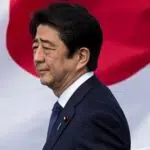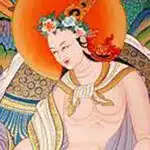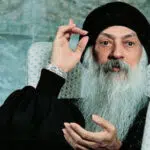The Sanskrit name surya here refers to the sun and namaskara means ‘salutations’…
Surya namaskara has been handed down from the enlightened sages of the vedic age. The sun symbolizes spiritual consciousness and in ancient times was worshipped on a daily basis. In yoga the sun is represented by pingala or surya nadi, the pranic channel which carries the vital, lifegiving force.
in yoga teacher training in india ,This dynamic group of asanas is not a traditional part of hatha yoga practices as it was added to the original asana group at a later time. However, it is an effective way of loosening up, stretching, massaging and toning all the joints, muscles and internal organs of the body. Its versatility and application make it one of the most useful methods of inducing a healthy, vigorous and active life, while at the same time preparing for spiritual awakening and the resulting expansion of awareness.
Surya namaskara is a complete sadhana, spiritual practice, in itself for it includes asana, pranayama, mantra and meditation techniques. It is an excellent group of asanas with which to start morning practice. Surya namaskara has a direct vitalizing effect on the solar energy of the body which flows through pingala nadi. Regular practice of surya namaskara regulates pin gala nadi, whether it is underactive or overactive. Regulation of pingala nadi leads to a balanced energy system at both mental and physical levels.
Follow these steps to practice Surya Namaskar
1) Position I: Pranamasana (prayer pose) Keep the eyes closed.
PRANAMASANA
Remain standing upright with the feet together. Slowly bend the elbows and place the palms together in front of the chest in namaskara mudra, mentally offering homage to the sun, the source of all life. Relax the whole body.
2) Position 2: Hasta Utthanasana (raised arms pose)
Separate the hands, raise and stretch both arms above the head, keeping them shoulder width apart. Bend the head, arms and upper trunk slightly backward.
3) Position 3: Padahastasana (hand to foot pose)
Bend forward from the hips until the fingers or palms of the hands touch the floor on either side of the feet. Bring the forehead as close to the knees as is comfortable. Do not strain. Keep the knees straight.
4) Position 4: Ashwa Sanchalanasana (equestrian pose)
Place the hands on the floor beside the feet. Stretch the right leg back as far as is comfortable and grasp the floor with the toes. At the same time, bend the left knee, keeping the left foot on the floor in the same position. Keep the arms straight. In the final position, the weight of the body should be supported on both hands, the left foot, right knee and toes of the right foot. The head should be tilted backward, the back arched and the inner gaze directed upward to the eyebrow centre.
5) Position 5: Parvatasana (mountain pose)
Keep the hands and right foot still, and take the left foot back beside the right foot. Simultaneously, raise the buttocks and lower the head between the arms so that the back and legs form two sides of a triangle. The legs and arms straighten in the final position and the heels come down towards the floor in the fm al pose. Bring the head and shoulders towards the knees. Do not strain.
6) Position 6: Ashtanga Namaskara (salute with eight parts or points)
Keep the hands and feet in place. Lower the knees, chest and chin to the floor; the feet will come up on to the toes. In the final position only the toes, knees, chest, hands and chin touch the floor. The knees, chest and chin should touch the floor simultaneously. If this is not possible, first lower the knees, then the chest, and finally the chin. The buttocks, hips and abdomen should be raised.
7) Position 7: Bhujangasana (cobra pose)
Keep the hands and feet in place. Slide the chest forward and raise first the head, the shoulders, then, straightening the elbows, arch the back into the cobra pose. This will lower the buttocks and hips to the floor. Bend the head back and direct the gaze upward to the eyebrow centre. The thighs and hips remain on the floor and the arms support the trunk. Unless the spine is very flexible the arms will remain slightly bent.
8) Position 8: Parvatasana (mountain pose)
The hands and feet do not move from position 7. From bhujangasana assume parvatasana. Keep the arms and legs straight, grip the floor with the toes and use the strength of the arms to raise the buttocks and lower the heels to the floor.
9) Position 9: Ashwa Sanchalanasana (equestrian pose)
Keep the palms flat on the floor and the right foot in place. Bend the left leg and bring the left foot forward between the hands. Simultaneously, lower the right knee so that it touches the floor and push the pelvis forward. Tilt the head backward, arch the back and gaze at the eyebrow centre.
10) Position I 0: Padahastasana (hand to foot pose)
Bring the right foot forward next to the left foot. Straighten both legs. Bring the forehead as close to the knees as possible without straining
11) Position II: Hasta Utthanasana (raised arms pose)
Keep the arms and spine in a straight line. Raise the torso and stretch the arms above the head. Keep the arms separated, shoulder width apart. Bend the head, arms and upper trunk backward slightly.
12) Position 12: Pranamasana (prayer pose)
Bring the palms together in front of the chest.
Positions 13-24: The twelve positions of surya namaskara are practised twice to complete· one round. Positions 1 to 12 constitute half a round. In the second half, the positions are repeated with two small changes related to ashwa sanchalanasana: a) In position 16, instead of stretching the right foot backward, stretch the left foot back. b) In position 21, bend the right leg and bring the right foot between the hands.
Conclusion: On the completion of each half round, lower the arms to. the side, relax the body and concentrate on the breath until it returns to normal. After completing surya namaskara, practise shavasana for a few minutes. This will allow the heartbeat and respiration to return to normal and all the muscles to relax.
























































